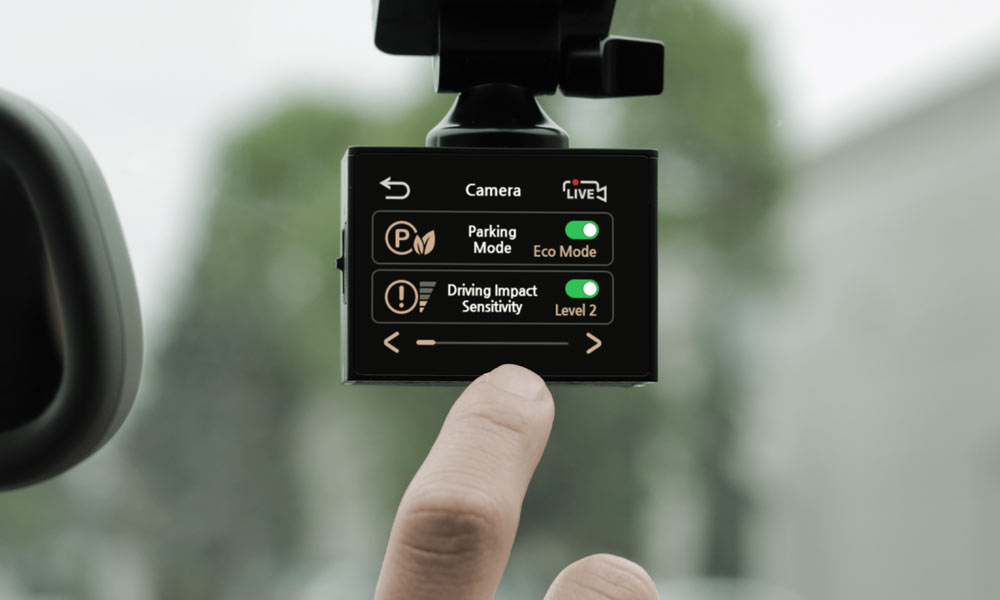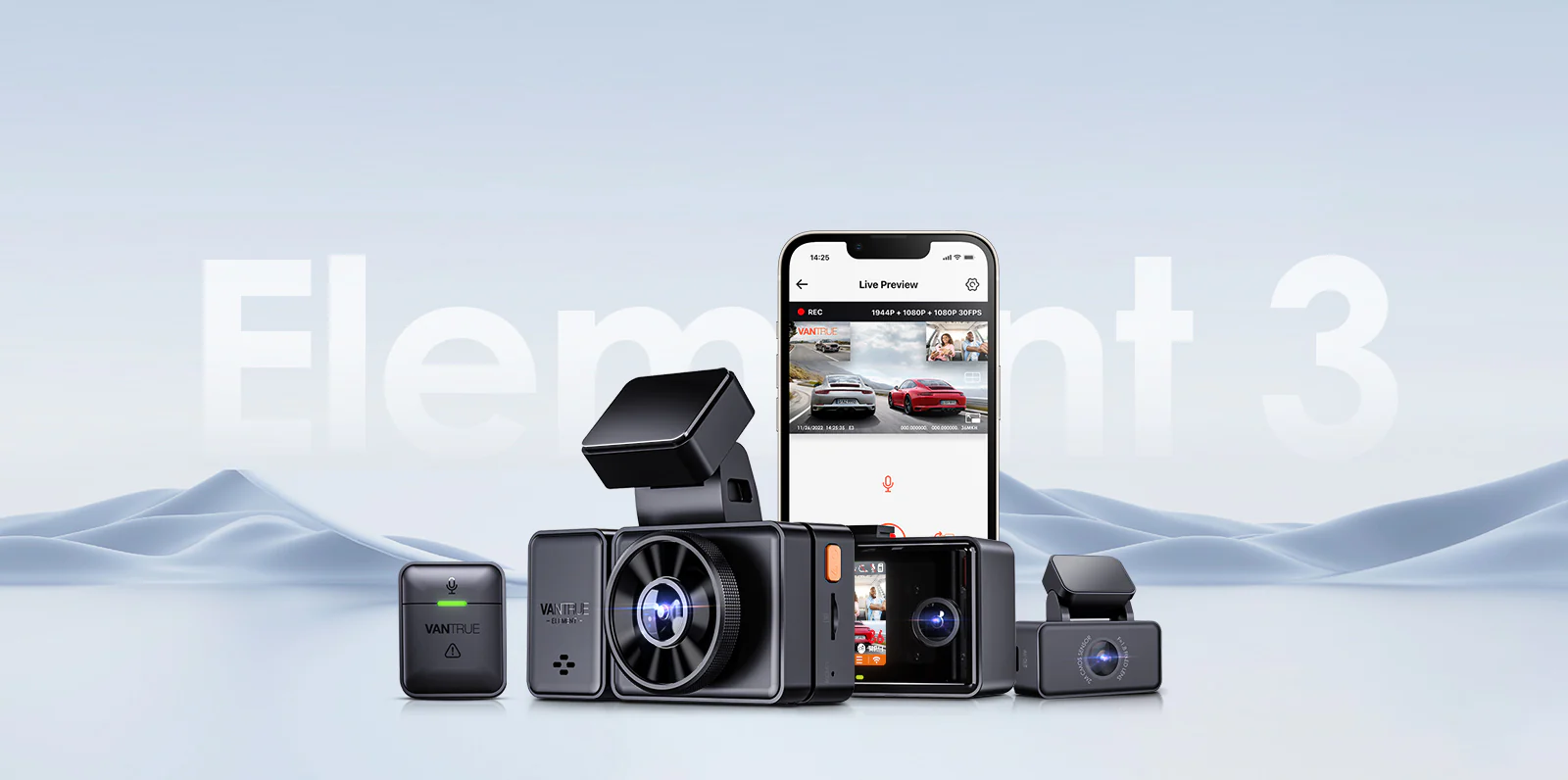Can a dash cam drain your car battery? Many drivers have pondered this query.
The answer, in short, is yes… However, the answer is not as simple as it seems.
Dash cams are handy devices for capturing unexpected incidents on the road. Dash cams, like other electrical devices in your car, such as charging your smartphone, listening to music, or turning on the lights, need access to your car’s battery.
If left unchecked, continuous use of these cameras could potentially cause some degree of battery drain. But don’t fret just yet!
The Impact of Dash Cams on Your Car Battery
Dash cams use less power than a regular light bulb, although it’s still a small amount. However, if you use it regularly, especially with features like parking mode, the dash cam draining your battery over time, can happen if not properly managed.
Understanding Parking Mode in Dash Cams

Enable parking mode is a key feature of dash cams, designed to provide protection even when your car is stationary. This continuous recording can be an asset but also has the potential for draining your vehicle’s battery and lose power. But this is why many would consider the options below, to help conserve their battery use.
Parking Mode: Buffered Event Recording

A critical aspect within dashboard cameras and their operation during parking mode is buffered event recording. These systems only record when they detect motion or impact events to save battery.
This method significantly reduces the strain on both memory storage space and most importantly, preserves battery power. However, it should be noted that different dash cam models will have varying sensitivity levels. This means some dash cams may trigger on to record lighter movements in comparison to other dash cams. Some models have settings to adjust the sensitivity level from low to high. The more frequently your dash cam records, the more power it may require.
How to Prevent Battery Drain from your Dash Cam

Dedicated External Batteries
You can ease the worry about drained car batteries caused by dash cams by using external batteries, hardwiring kits, or adjusting the settings of your dash cam.
This means that while you’re driving around town in Australia’s bustling city streets or cruising along its scenic coastal roads, these special external batteries charge. When your car is parked, whether it’s overnight or during work hours, the stored energy in external batteries will power your dash camera instead of relying on your car battery.
A potential solution lies in using dedicated batteries or hardwiring kits designed specifically for dash cams. As a part of our BlackVue dash cam installation, if you supply the BlackVue external battery, this too can be fitted additionally. These offer complete protection from draining your main car battery while ensuring continuous operation of your device.
The main idea is to achieve reliable recording without making your vehicle’s primary energy source completely vulnerable. This can be challenging, but with careful management and planning, it is possible with a dedicated external battery.
Parking Mode Hardwiring Kit
Another effective method to prevent draining from parking mode usage involves using hardwiring kits specifically designed for dashboard cameras such as Power Magic Pro by BlackVue or alternatives available in the market today. The hardwiring kit connects to your vehicle’s fuse panel. It allows continuous operation, even when the car is not moving (native parking mode), by using minimal power from your main power supply. This method offers several advantages over using the cigarette lighter power socket.
a.) Constant power: Continues to record even when the car is turned off, which is very important in capturing incidents that occur while you are parked.
b.) Low voltage cut-off: which means it will automatically disconnect power from your dash cam if the battery voltage drops too low – this prevents your car battery from being drained.
c.) Less clutter: don’t have to worry about messy cables hanging down and across your dashboard and console; looks neat and tidy.
d.) Frees up your cigarette socket: This will be a huge benefit to those who require the cigarette lighter power socket for other appliances such as charging your smartphone.
Voltage Monitoring System through Hardwiring

Most dash cam models have programmable voltage thresholds to prevent excessive drainage. These thresholds automatically stop recording if the voltage drops too low, preventing unexpected power loss while driving. Always check with the dash cam settings to ensure that it’s threshold voltage is higher than the minimal requirement for your car to start up. All dash cam models and cars will vary in this instance, so it always pays to do a little extra research.
Always choose a hardwiring kit compatible with your dash cam model; usually your dash cam brand will also have their own hardwiring kit. For example, Power Magic Pro by BlackVue designed for BlackVue and Vantrue 5-Level Adjustable Hardwire Kit for Vantrue models and so on.
Drive Regularly
When you drive your car, it charges your car battery. The alternator is an electrical component that generates electricity to power the car’s electrical system while the engine is running. This alternator is what also charges your car battery. If you are not driving, your battery is not getting the opportunity to charge. A common reason why cars tend to go flat after periods of not driving. Now, consider your parking mode function, it will require power to record when it detects nearby movement when your car is off. Always consider driving your car regularly so that your battery can charge. Remember, not all cars are made equal, some may require more power than others, be more sensitive and so on. Which leads onto our next point
Adjust your Dash Cam Settings
Your dash cam settings may offer you the option to adjust the sensitivity of the Parking Mode function. If you want high sensitivity, it means it will trigger more often on smaller movements, which requires more battery power to constantly record. The opposite also holds true.

Electric Vehicles and Dash Cam Drain
In the realm of electric vehicles (EVs), dash cam drain is less of a concern due to their larger battery capacity. This significant power reserve enables EVs to support dashboard cameras for longer periods without substantial impact on overall charge.
However, it’s not all plain sailing with EVs and dash cams. There are instances where even these robust batteries arrive ratted, especially in electric SUVs that heavily utilise features like parking mode which keep the camera operational when you’re parked up.
FAQs in Relation to Can a Dash Cam Drain Your Car Batttery?
How do I keep my dash cam from draining my car battery?
Consider using a dedicated battery pack or hardwiring kit for your dash cam. Generally, you don’t need an external battery if you are hardwiring your dash cam, unless you plan to use many other electrical appliances as well. Always look to adjust your dash cam parking mode sensitivity settings, the higher the senstivity the more frequently it will record and therefore demand more power. For the hardwiring kit, you can adjust the voltage cutoff settings. to automatically disconnect the dash cam from the power source once the car battery reaches a certain voltage. Last but not least, drive your car regularly as this allows the car battery to charge through the alternator.
Does the dash cam run when the car is off?
If the camera has parking mode enabled, it can keep recording even after you turn off the engine. It will turn on and start recording when it detects nearby movement. So, if someone happens to hit your car while it is parked, it can turn on to record this event.
What drains a car battery quickly?
Prolonged use of electrical systems like lights, radio or air conditioning while the engine is off can rapidly deplete a car’s battery. Just like any other electrical appliance, a dash cam too can drain the battery, despite using less power than your standard light bulb.
Should I unplug my dash cam when car is off?
If you’re concerned about preserving your vehicle’s battery, unplugging the dashboard camera whilst not driving might be beneficial, but comes at the cost of less surveillance. You will not get the coverage of when an incident occurs whilst the car is parked via a hardwire installation. However, for those with parking mode enabled, your hardwiring kit settings and voltage monitoring settings will allow you to better manage power consumption. Rather than disconnecting or turning off your dash cam, adjusting the settings would make better sense.
Conclusion
So, we’ve navigated the world of dash cams and their potential impact on your car battery.
The truth is clear – Can a dash cam drain your car battery? If not managed properly, it probably could.
We’ve explored how features like Parking Mode could contribute to this issue. But also learnt that solutions such as dedicated batteries, hardwiring kits, adjusting settings and driving can easily prevent complete power depletion.
Even more reassuring was discovering voltage monitoring systems which protect against unwanted drains by shutting down cameras when necessary. It is always worth considering that all cars vary in terms of battery management, some cars may be more sensitive than others or more demanding, which is why adjusting your settings ot your car’s preference is ideal.
All these insights point towards one key fact: while there are risks associated with using a dash cam, they’re manageable with proper understanding and precautions. So go ahead, equip your vehicle with this useful device without fear of unexpected power loss!
If you need help installing or managing your dash cam system effectively to avoid any negative impact on your car’s battery life, Schmicko, Australia’s leading mobile car care service provider is here for you.

Car Care Advice For The Everyday Driver & Enthusiast
With a relentless hunger to deliver car owners and drivers across the world with the latest emerging trends and innovations in the car space, you have tuned into the right place.


